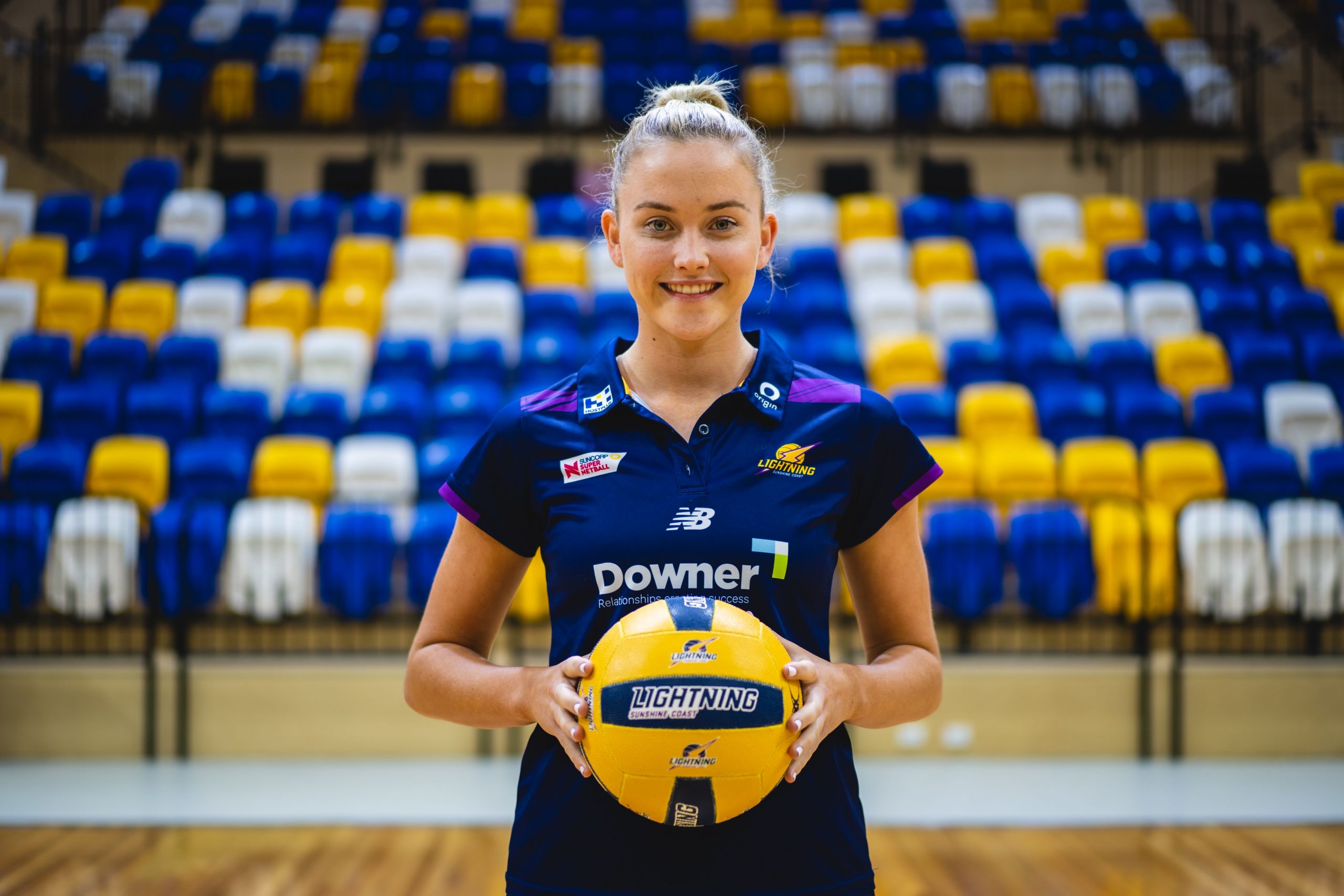IN the midst of COVID-19 confusion, umpire supervisors at Melbourne-based Parkville Netball Competitions have taken it upon themselves to continue as much umpire-based learning as possible while matches are postponed. The competition is one of two umpiring Centres of Excellence in the state, seeing its Tuesday Premier Open division umpire cohort come together weekly during the pandemic to further their skills.
With a combination of theory-based learnings such as now-disused umpiring papers and examining footage of the Victorian Netball League (VNL), the group has been gathering online every week during the unprecedented break and enjoying the odd Q&A throughout thanks to connections its supervisors have forged over the years – namely former VNL coach, Leesa Maxfield, internationally accredited umpire, Kate Wright and most recently, Australian netballer, Sharelle McMahon.
A player who redefined the goal attack position, champion netballer McMahon has become a household name in Australia over the years, pulling on the green and gold 118 times over the course of an outstanding 13 years internationally as well as a number of years with both the Melbourne Phoenix and Melbourne Vixens. McMahon has racked up the accolades over the years, debuting for Australia in 1998 and making her mark on international netball with her match-winning goal at the 1999 World Netball Championships final.
Growing up in Bamawm in country Victoria, McMahon grew up playing a combination of netball and athletics, playing in footy-netball and association competitions. McMahon was eventually picked up for the Victorian Institute of Sport (VIS) at age-16, with that aspect of her netball journey culminating in a move to Melbourne at a young age to pursue her netball.
“The legendary Marg Caldow rang me and asked me to move down to Melbourne and take up a scholarship at the VIS (Victorian Institute of Sport), so that meant going to school at Wesley College for year 11 and 12,” McMahon said. “That was really hard and initially I didn’t want to do that. Initially I thought ‘nah, I think I’ll stay, that sounds too hard!’”
“With some encouragement and some really great support around me I took that jump at 16-years-old and moved down to Melbourne and, you know, it was a great experience, I’ve worked with some amazing people over the journey. And that started with Marg Caldow so I feel very lucky with the people that I’ve worked with.”
A big challenge at the time however was McMahon’s homesickness. While she had her support network in Melbourne, the young goaler still wanted some home comforts, one of which was getting to return to her hometown and close-knit family and friends to play in the footy-netball league where possible.
“One of the things we said to Marg Caldow when we were talking about whether I would come to Melbourne was as long as I can go home on the weekends and play! And so she allowed me to do that, but sometimes not as often as I would have liked.”
But heading home for the footy-netball league opened up a new can of worms for McMahon, who had progressed with Caldow from being a self-confessed ‘free spirit’ on the netball court, to having a bit more structure in her game play and having to adjust back to the country level.
“One of the things I do really clearly remember is working with my coach on my rebounding. I used to rebound from behind and kind of flick it over and take the ball, jump up and grab the ball, and I used to get called for contact a lot in the country doing that.”
“My coach got some umpires to have a look and was like, ‘she’s not touching them when she’s jumping up to get that ball!’” McMahon said. “I think my ability to be able to do that was surprising to some people and so I was getting called for contact when probably I wasn’t contacting, but you know there was that adjustment that I had to make when I was going back both with my play and what I was experiencing.”
Adjusting to the umpires continued throughout McMahon’s career, as McMahon brought up how there were times when, even at the top level, she sometimes had to adjust the way in which she played, not only for the players on court but the umpires who were officiating, whether it be at the domestic or international level.
“That happened right throughout my career. We spoke about this a lot in the Australian team … each country has a different style of play, each country has different strengths, so we would have to adjust what we did according to that. And we actually approached how we were being umpired in a very similar way.”
“Depending on which coach I had, Norma (Plummer) was very big on reading umpires and adjusting to that … we used to watch videos about what calls are being made and how we could adjust to that more quickly when we were in the game. So, you know, as you say at those different levels you have to adjust but that happens right through whatever level you’re at.”
With international umpires coming together from across the world to umpire world-class competitions such as the Netball World Cup (then-World Netball Championships) and Commonwealth Games, different interpretations between umpires and their respective experience can sometimes also factor into how matches play out and the quality of contests in those matches.
“They (some umpires) just interpreted things differently, they had a different style, just like us athletes, we had different styles when we were coming from different countries and I guess in those different levels that’s the same, everyone’s got a different style and different strengths and different ways of reading it, probably more so with the Australian level.”
McMahon says that where players and coaches have a massive influence over what happens on court, the umpires have just as big a role in how they officiate matches and to what extent they allow the contesting of play and testing of boundaries – with McMahon herself one who would time and time again try to push that boundary to the limits.
“One of the things I always liked about playing netball was not just the challenge against my opposition but the challenge against myself, looking at what moves I could make, how small was that gap that I could get through, really wanting to kind of challenge myself on that,” McMahon said. “And if I was allowed to get through that tiny gap, even though there was a bit of contact, well probably next time I’ll try and get through a smaller one!”
“If I was allowed to do that, probably next time I’ll do it a bit more until I find where that line is. And if the line is a little bit further than what you thought, well, that’s where the play will go. That’s kind of how I always approached it, rightly or wrongly, so I definitely think that the umpires can have a huge influence over the style of play and the contest, and how far that goes.”
While those were some of the on-court, boundary-pushing opportunities that McMahon took to gain the best positioning or access to the goals, she also spoke about some of the post-netball opportunities she has had in coaching and commentary roles after retiring from international duties in 2011 and netball overall in 2013.
“I think in many ways, when you’ve been around for as long as I had, you’re a coach even though you’re only a player anyway – you’re always working through tactics and helping your teammates out, figuring out what their strengths are and how to get the best out of them. So I’d always loved that part of it, and getting the best out of people is what drives me.”
“I went straight into broadcast, but I was given the opportunity to continue working with the group (Melbourne Vixens) and probably from a selfish standpoint, I was really keen to do that … I moved out of home when I was 16 and lived in an elite training environment where I had been around people like that, inspiring me I guess in many ways and supporting me for 20 years. So I think for me the thought of going cold turkey on that didn’t sit very well.”
“It’s always been about opportunity, you know, when I had the opportunity to move down to Melbourne I wasn’t sure but I took it and you know there’s been many moments like that in my life that I’ve kind of gone – ‘I don’t know if I should do that’. And it might be too hard or it might be outside my reach. But I’ve tried to always just say yes to those things, and give it a go.”
“People asked me how I chose netball over athletics. It was because the opportunity came up in netball first. And so that’s what I jumped at and went with,” McMahon said. “Those opportunities kept coming up in netball, and what I had to do was make a decision between coaching and commentary last year, which was really hard because I love commentary, I really enjoy that. But the opportunity to work with a group like this and Simone (McKinnis), and learn from her from that perspective was something I was really excited about.”
Tune in later this week for PART 2.
—
Thank you to Sharelle McMahon and the supervising team at Parkville – Joel Owen, Juleen Maxfield and Penny Carlson – for giving Draft Central access to this session.
Note – All questions throughout the meeting were contributed by the aforementioned umpiring cohort and supervisors, with just snippets of the hour-long meeting making the cut and much of the conversation revolving around umpiring.
















[…] PART 1 – Sharelle McMahon: Pushing the boundaries. […]